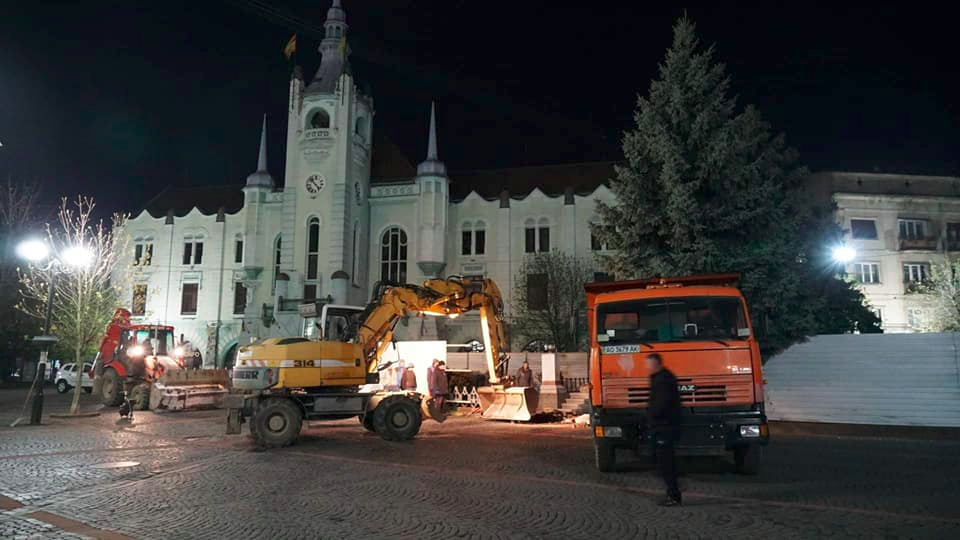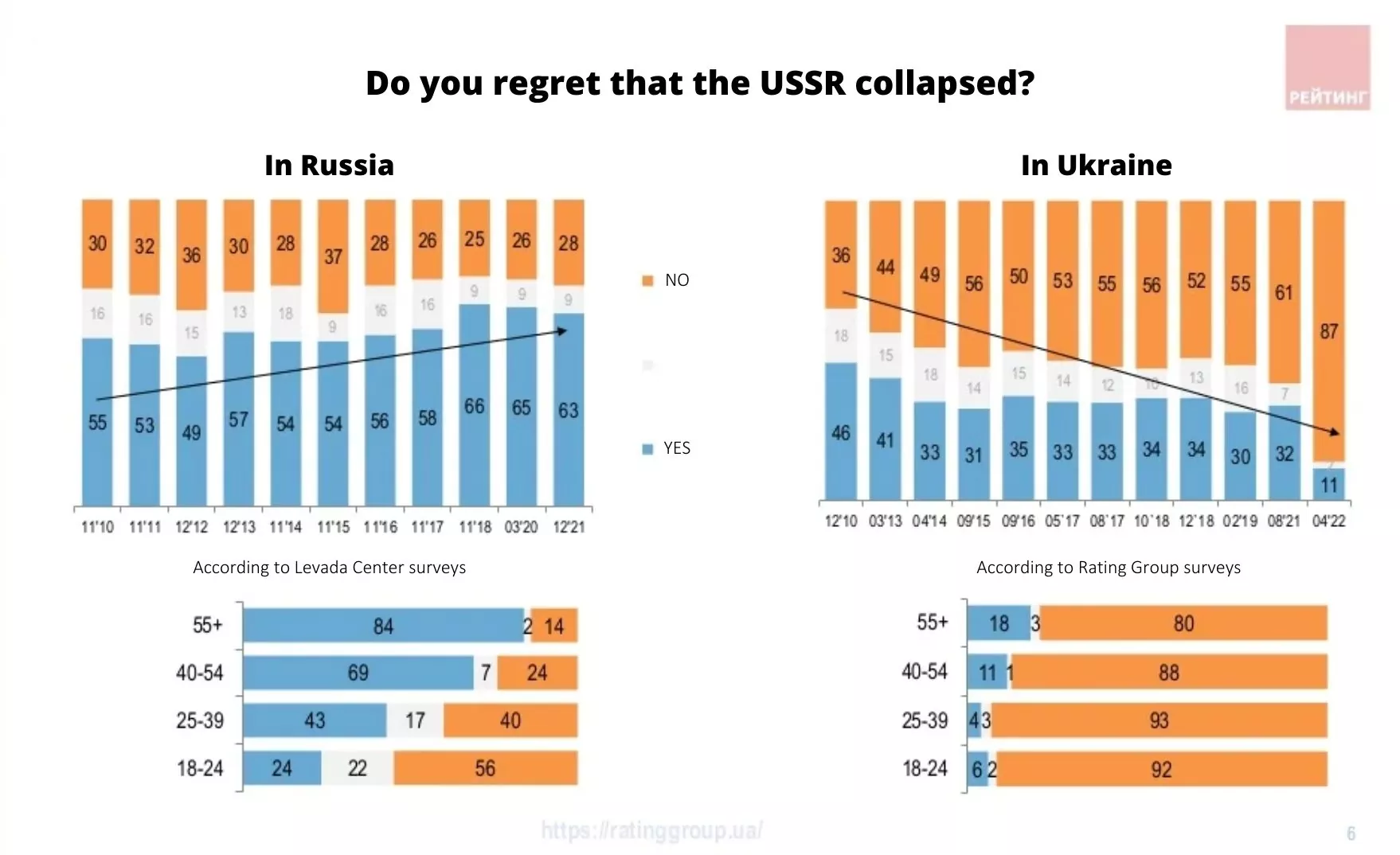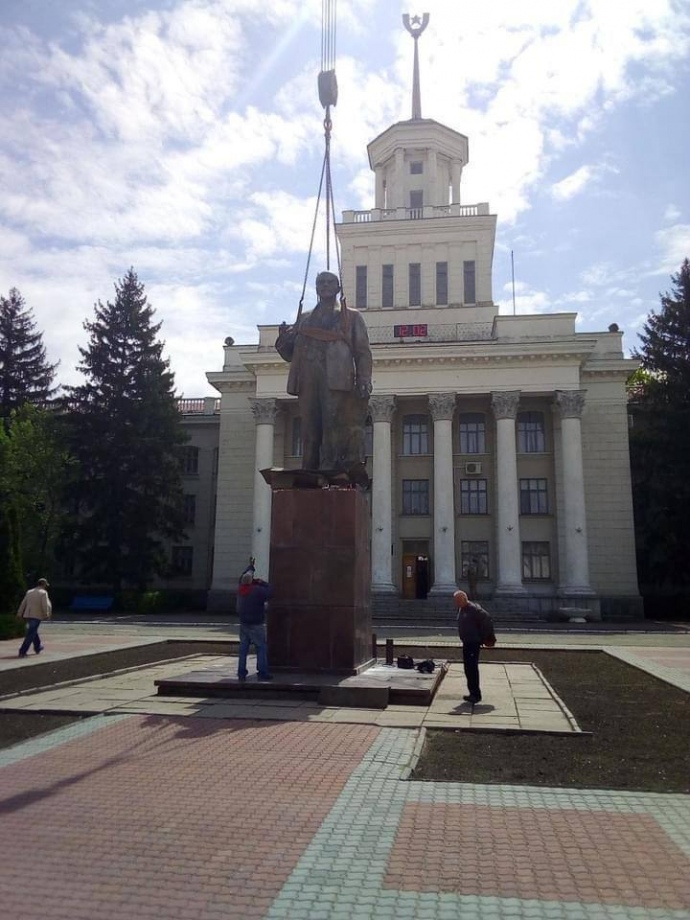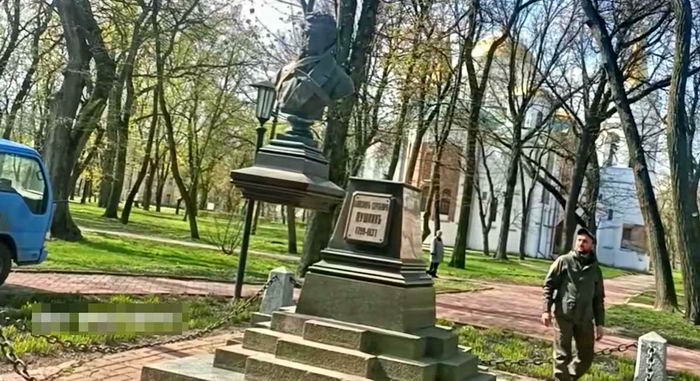The new Ukrainian cultural liberation includes abandoning the narrative of “Great Russian Culture” that implied that other cultures of the empire were of “lesser value,” if they existed at all. As a result of such a narrative, Russian cultural figures were ubiquitous in the Ukrainian school curriculum, street names, and monuments, when compared to German, English, and other world cultures honored by Ukrainians.
Russian poet Alexander Pushkin, for example, has little to do with Ukraine. There is no reason for his monuments to remain on the streets of almost every Ukrainian city (and sometimes there are several in one city). Keeping them is nothing less than paying homage to the former colonial status of Ukraine.
The same is true for most Russian writers, composers, artists, and scientists who were often revered in Ukrainian cities, while the accomplishments of their Ukrainian peers were ignored and eventually forgotten.
All this is changing now. However, as expected, there are various opinions on what should be renamed or dismantled and what should remain. But some monuments, like those to Pushkin, raise no debate and are quickly eliminated.
Russian invasion buried the myth of a “brotherly nation” and its monuments
One of the first monuments to be dismantled was the monolithic bronze statue glorifying the so-called “Unification of Ukraine with Russia,” which stood in the center of Kyiv. It was a tribute to the Soviet - and Russian - concept of Ukraine as a "brotherly nation" and implied that Ukraine could not exist outside of “Greater Russia.”
The monument was installed in 1982 and represented the so-called fraternity of Russian and Ukrainian workers in the USSR. Another monument, made of red granite, was dedicated to the Pereiaslav Agreement of 1654. That treaty is lauded by Russians as one of their greatest achievements, but for Ukrainians, it is one of its worst calamities. At that time, Ukrainian Hetman Bohdan Khmelnytskyi was seeking support in his war for autonomy against the Polish king and made a defense alliance with the Russians. But Russians betrayed the principles of the treaty, which had guaranteed federation and liberties. Their goal all along was to subjugate Ukrainians and gradually enslave them. Later, the Ukrainian resistance was crushed by Russian troops during the bloody massacre in the Ukrainian Cossack capital Baturyn in 1709.
Hetman Khmelnytskyi’s legacy has always been controversial, as expressed by many Ukrainians throughout the centuries. Best known is the poem “Devastated Grave,” by the Ukrainian national poet Taras Shevchenko from his preeminent collection of poems Kobzar, where he laments Khmelnytskyi as an “foolish son”:
[...]I watched over my small children,
Teaching them the way,
And my flowers throve and grew,
My children true and good,
And there was a time, indeed.
When in this world I ruled.
Yes, indeed, I ruled . . . O Bohdan,
O my foolish son!
Look you well, now, on your mother,
On Ukraine, your own,
Who, as she rocked you, sang about
Her unhappy fortune,
And singing, wept a mother’s tears,
Looking out for freedom! . . .
Bohdan, O my little Bohdan!
Had I known, in the cradle
I’d have choked you, in my sleep
I ’d have overlain you.
Now my steppes have all been sold,
In Jews’ and Germans' hands;
And my sons at foreign toil,
Far in foreign lands;
My brother, Dnipro, now runs dry
And is deserting me;
And my dear graves the Muscovite
Is plundering utterly.[...]
Just four years after the Pereiaslav Agreement, in 1658, it was annulled by the new Treaty of Hadiach, which established the Cossack alliance with the Polish-Lithuanian Commonwealth and included guarantees of the Cossack rights. Yet, both treaties eventually failed and the Cossack state was divided between Russia and the Polish-Lithuanian Commonwealth in 1667 with subsequent further expansion of Russia.
After the February 2022 Russian invasion of Ukraine, the Kyiv city council voted to dismantle both monuments.
“We are dismantling a bronze sculpture of two workers, erected in 1982 to commemorate the reunification of Ukraine with Russia. Russia has ‘marked’ its attitude to Ukraine with the brutal killings of peaceful Ukrainians, the destruction of our cities and towns, and the desire to destroy our statehood. The second sculptural composition – made of red granite – will be covered with finishing materials and will also be dismantled later …” Kyiv mayor Vitaliy Klytschko said.
The author of the sculpture, Serhiy Myrhorodskyi, commented on the demolition:
“The sculpture [of the workers] should be destroyed and melted. It is meaningless today. It is not a masterpiece. It is unclear where an Ukrainian is and where a Russian is. It never mattered, they were just two workers, people without nationality … There is already a sculptor who will create a new work. In a year, there will be a monument in honor of the united Ukraine and would call everyone to live in peace and harmony.”
When the sculpture was being dismantled, the head of one of the figures broke off. Kyivans widely perceived him to have been the Russian worker, although there was never a clear inscription as to which nationality he held:
While Kyiv authorities were dismantling the monument "To the unification of Ukraine with Russia" today, the head of the Russian worker broke off.
The monument was installed in 1982, showing Ukrainian and Russian workers holding together the USSR emblem. pic.twitter.com/gFsGPu5W5d
— Euromaidan Press (@EuromaidanPress) April 26, 2022

Ukraine clears itself from the Pushkin monuments and Russian street names
Monuments to Pushkin and the streets named after famous Russian artists and literati such as Tolstoy, Dostoevsky, Tchaikovsky, et al, which could be found in every Ukrainian city, will soon disappear. These individuals neither represent Ukrainian art and culture nor are of Ukrainian origin. Instead, Ukrainian writers and other cultural figures would finally receive their rightful recognition and homage.

Since the current Russian invasion, 45 streets have been renamed in Khmelnytskyi, for example, and 25 in Ivano-Frankivsk. Among them are:
- Pyotr Tchaikovsky Vulitsa (street). renamed Vulitsa of Vasyl Slipak who was a Ukrainian opera singer and soloist of the Paris Opera. Slipak returned to Ukraine in 2014 to participate in the Revolution of Dignity and then to defend Ukraine against Russia in Donbas, where he was killed by a Russian sniper.
- Korolenka Vulitsa into Vulitsa of Vira Levytska, famous Ukrainian theater actress.
- Nikolay Ogarev Vulitsa into Vulitsa of Myroslav Lushchak, Ukrainian theologian from Ivano-Frankivsk
- Semen Rudnev Vulitsa (a Soviet partisan) into Vulitsa of Sviatoslav Pakholkiv, commander of a regiment in the Ukrainian Insurgent Army (UPA), and a knight of the Bronze Cross of Military Merit in UPA.
- Mikhail Glinka Vulitsa into Vululitsa of Oleksandr Tysovskyi, Ukrainian educator and co-founder of Plast, an international Ukrainian scout organization.
- Also, vulitsas of Tolstoy, Dostoevsky, Lermontov, Mendeleev, and Nekrasov were renamed to vulitsas of Heroes of Kyiv, Chernihiv, Mariupol, Popasna, and Okhtyrka.
Dismantling monuments to Pushkin and Bulgakov has unequivocal support, the legacy of some other figures sparks debates
In Kyiv alone, 400 street names are proposed for renaming but not all of them will be renamed. The discussion is ongoing. Such figures as Pushkin or Soviet writer Mikhail Bulgakov, who actively promoted colonial and chauvinist attitudes towards Ukrainians raise little debate. Ukrainian writer Andriy Bodnar, for example, said about Pushkin:
“Everything is easier with Pushkin than it may seem. The cult of Pushkin is as imperial as his works. What is the myth of Pushkin? It was created in 1937 on the anniversary of the poet's death and simultaneously with the systematic destruction of Ukrainian culture in Sandarmokh [a place of mass killing of many Ukrainian cultural figures that took place in 1937 - Ed.] and other concentration camps of the Russian Empire … What Ukrainians are doing today is a natural reaction to the metastases of foreign culture, which is spread all over the country under the disguise of the monuments. Ukrainian poets should be in his place."

Ukrainian literary critic Larysa Masenko also wrote on the problem with the Bulgakov writings:
“Bulgakov, as a Russian intellectual with an imperial consciousness, could not imagine Ukraine outside of Russia. The idea of Ukrainian state independence was alien and unacceptable to him. For the White Guard officer, both the Bolshevik troops and the Ukrainian soldiers who entered Kyiv in January 1918 were enemies who threatened to disintegrate the ‘united and indivisible’ Russian Empire. The White Guard has many episodes that demonstrate the author's imperial supremacy and the author’s hatred of the struggle of Ukrainians for their state.”
On the other hand, Ukrainian writer Ostap Ukrayinets, while agreeing with the general goal of removing Russian traces, has called for a more selective approach and a full study of each author’s merits and accountability before renaming the streets.
“Some monuments, such as Lenin or Zoya Kosmodemyanskaya, create an unsolvable problem. They cannot exist in a context that does not deny Ukraine. Therefore, they should be eliminated. However, monuments to an unknown soldier often require a more delicate approach: from dismantling Soviet symbols to dismantling and replacing monuments with an ideologically neutral memorial. Still others may deviate from the general rule (yes, the dismantling of monuments to Pushkin is appropriate) and require a separate approach (the monument in a city funded by the citizens themselves would be qualitatively different) ... I share the goal, but people who seek to rename everything at once do not realize that their efforts are working against this goal.”
Such a selective approach is especially relevant to Soviet cultural figures of Ukrainian origin. Thus, Kyivans met with outrage a proposal to rename streets of Ukrainian writers Mykola Bazhan and Pavlo Tychyna, who became loyal to the Soviet regime under the threat of execution (while hundreds of Ukrainian writers were indeed executed). At the same time, Tychyna and Bazhan had created Ukrainian literary masterpieces before being forced to proclaim their loyalty to the USSR.
As part of other symbolic breakaways from the “Russian World,” Odesa dismantled five plaques of its Russian sister cities from a monument on the Duma Square — namely, Moscow, Saint Petersburg, Rostov, Volgograd, and Taganrog. Instead, local authorities plan to place there the names of cities actively helping Odesa during wartime.
https://twitter.com/EuromaidanPress/status/1514588413688696834?ref_src=twsrc%5Etfw
The debate is currently ongoing about what to do with the monument to Russian Empress Catherine II (Catherine the Great) in Odesa. She allocated many crown riches and resources to develop Odesa as a major port city of the Russian Empire. At the same time, she was not the founder of the city – which is likely a widespread myth. She also ordered and performed the full destruction of the remaining elements of Ukrainian Cossack autonomy.
In Kharkiv, where active fighting continues at the time of the publication, Mayor Ihor Terekhov said the renaming process will be completed “at the very first session” of the city council after the Ukrainian victory:
“After our victory, at the very first session of the city council, I will offer the city council the options for renaming not only the Moscow district and Moscow street. I think that in the situation of war unleashed against us, many names of streets, squares, and public transport stops associated with the Russian Federation should disappear from the map of Kharkiv. Even without these names, the city will have too many scars that will remind us for a long time about what kind of neighbor is beyond our eastern and northern borders. In the near future, we will create a special section on the city council website where you can leave your suggestions about which names of places in Kharkiv should disappear forever and which ones should appear.”
Whatever was left from the Soviet sculptural labels on Ukrainian territory after 2014 is extinguished
In some regions, the remains of the Soviet monuments are only now being dismantled. For example, in Kropyvnytskyi, local authorities were not eager
to dismantle the "60 Years of Komsomol" [communist youth organization - Ed.] sculpture. They said it would cost $15,000, so better to allocate the money for “first-priority tasks.” However, after the Russian invasion in February 2022, the monument was quickly dismantled.
“It would be good to install a destroyed Russian APC or a tank here. So that people will come with children and see that we had a war, and that Russia has attacked us,” said Dmytro Zavrazhnyi, an activist who has been demanding to dismantle the monument for a long time.

Similar was the situation in Mukachevo, Zakarpattia Oblast, with the monument to Soviet soldiers in the city. Although these soldiers were fighting the Nazis, they were at the same time establishing the Soviet regime in Ukraine. In western Ukraine, Soviet soldiers are considered to be occupiers and not "liberators" in any way.

Similar monuments are also about to be dismantled in Chernivtsi. Svitlana Vardevanyan from Chernivtsi University stated why these monuments to Soviet soldiers and the Soviet army should be dismantled:
“Let's do an experiment. Imagine that the monument [to a Soviet soldier in Soborna square] comes to life. And the Soviet liberator, waving a flag (what color?), addressing us (in what language?), says ... Do you really want to hear what he says? And listen to him for a long, long time? And not just listen, but listen, because the monuments have symbolic power over the place where they are located. Are you ready?”
Yuriy Chorney from the Bukovynskyi cultural foundation in Chernivtsi proposed that it is better to commemorate those Ukrainian soldiers who raised the flag over the Reichstag, with contemporary new monuments. Even more, he proposed to portray the Second World War in its complexity, which would be a challenge to the artist:
“It should be our monument, which would not only clearly testify our personal participation in the war but also convey the tragedy of Ukrainian history of that period when we did not have our own state, and therefore both fought for it and [were forced to fight] against it in foreign armies. That's where the real challenge lies for artistic creativity and imagination. With explanations of why it is better to have and defend your own state, so as not to die in another nation’s wars for another nation’s imperial ambitions.”

Among other examples of dismantled Soviet monuments is a Soviet tank Т-34 in Zhytomyr. Such tanks were typical for the USSR to be installed as a part of its cult of victory in WWII. The tank will now be brought to the memorial of the victims of WWII and installed there, Zhytomyr mayor Serhiy Sukhomlyn said. The tank T-34 was also used in suppressing the uprising in Hungary in 1956 and Czechoslovakia in 1968, and was used in fighting with UPA.
Also, in Lutsk, the city council dismantled Soviet and anti-Ukrainian symbols at the "Eternal Glory" memorial dedicated to Soviet victory in WWII. The memorial will be reconstructed to commemorate all victims of the war. The year 1939 will also be inscribed, instead of 1941, as the actual date of the beginning of the war, contrary to the Soviet myth of the "Great Patriotic War of the USSR," which officially began in the year 1941.

Russian occupation authorities in Kherson Oblast restore earlier dismantled monuments to Lenin and Soviet red flags
Putin's dreams to restore the USSR now materialize in the occupied territories where old monuments to Lenin are erected again. It had to be expected. Ukrainians widely perceive the collapse of the USSR as the long-desired collapse of the empire, where Ukrainians experienced mass executions and the genocide of Holodomor. For the majority of Russians, however, USSR is the collapse of their domination that they mourn and dream to restore, as promoted by the official state propaganda.


Related:
- Ukrainians report over 400 cases of rape and other for
- Trophy dog abandoned by Russian army learning to obey commands in Ukrainian
- Not enough weapons, not enough Russian sanctions: opinion poll
- “At first, I did not want to live.” Ukrainian nurse got married after Russian mine took her legs
- Russian propaganda escalates, laying ground for nuclear strike
- 12 reasons why the West should arm Ukraine, now!

